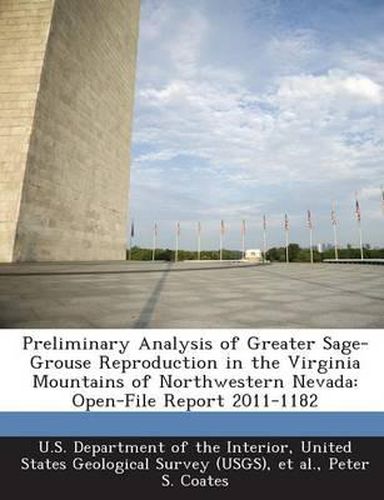Readings Newsletter
Become a Readings Member to make your shopping experience even easier.
Sign in or sign up for free!
You’re not far away from qualifying for FREE standard shipping within Australia
You’ve qualified for FREE standard shipping within Australia
The cart is loading…






Relationships between habitat selection and population vital rates of greater sage-grouse (Centrocercus urophasianus; hereafter sage-grouse), recently designated as a candidate species under the Endangered Species Act, within the Great Basin are not well-understood. The growing development of renewable energy infrastructure within areas inhabited by sage-grouse is thought to influence predator and vegetation communities. For example, common ravens (Corvus corax), a synanthropic sage-grouse nest predator, are increasing range-wide and select transmission lines and other tall structures for nesting and perching. In the Virginia Mountains of northwestern Nevada, we collected preliminary information of space-use, habitat selection, and population vital rates during the nesting and brood-rearing period over two years on 56 sage-grouse. Additionally, videography at nest sites (n = 22) was used to identify sage-grouse nest predators. The study area is a potential site for renewable energy developments (i.e., wind and solar), and we plan to continue monitoring this population using a before-after-control-impact study design. The results reported here are preliminary and further data are required before conclusions can be drawn from this population of sage-grouse.
$9.00 standard shipping within Australia
FREE standard shipping within Australia for orders over $100.00
Express & International shipping calculated at checkout
Relationships between habitat selection and population vital rates of greater sage-grouse (Centrocercus urophasianus; hereafter sage-grouse), recently designated as a candidate species under the Endangered Species Act, within the Great Basin are not well-understood. The growing development of renewable energy infrastructure within areas inhabited by sage-grouse is thought to influence predator and vegetation communities. For example, common ravens (Corvus corax), a synanthropic sage-grouse nest predator, are increasing range-wide and select transmission lines and other tall structures for nesting and perching. In the Virginia Mountains of northwestern Nevada, we collected preliminary information of space-use, habitat selection, and population vital rates during the nesting and brood-rearing period over two years on 56 sage-grouse. Additionally, videography at nest sites (n = 22) was used to identify sage-grouse nest predators. The study area is a potential site for renewable energy developments (i.e., wind and solar), and we plan to continue monitoring this population using a before-after-control-impact study design. The results reported here are preliminary and further data are required before conclusions can be drawn from this population of sage-grouse.